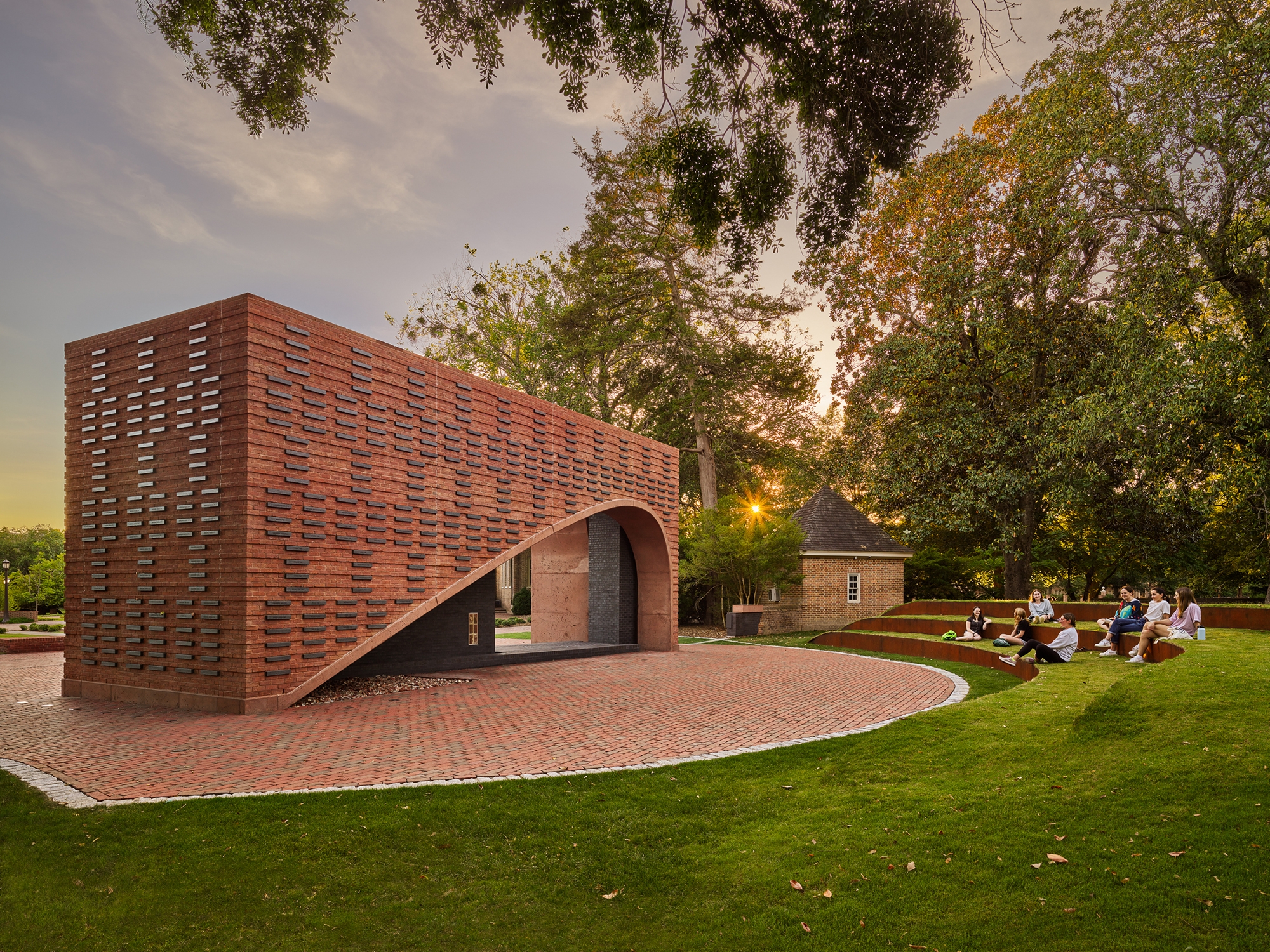It took 304 years to get here. Here where souls—named and unnamed—could be recognized. Here where respect and honor are imbued to those who lived without it. 304 years between William & Mary’s first purchase of enslaved individuals in 1718 to the 2022 dedication of Hearth: Memorial to the Enslaved. The Memorial is not just a place of remembrance, but of acknowledgement: a connection to the university’s—and, for all intents and purposes, the nation’s—shared history with the institution of slavery.
The story unfolding at William & Mary is not unique. Across the country—most notably in the south and particularly in Virginia—institutions and communities are taking a harder look at their heritage; the narratives evolving as truth is unearthed. Because the truth is: for a great many generations, the stories we told and the legacies we upheld were missing voices. In many places, and in many ways, we still are.
Only recently, in some places just within the last two years, has there been a movement to hear the unheard voices. To tell the untold stories. To uncover the myriad ways in which history has forgotten or otherwise avoided the uncomfortable realities of the intersection of slavery and American life. Our work with universities, organizations, and communities seeks to write a new narrative. One that not only educates and informs, honors, and recognizes, but celebrates the many voiceless enslaved who came before us.
This Juneteenth we are proud to share some of the untold stories we are helping to tell.
The Burying Ground at University of Richmond

“Knowledge of This Cannot Be Hidden.” It’s both the title of a 2019 report detailing the history of the University’s Westham Burying Ground, and an edict. The report, completed as part of comprehensive research into the site’s history as an enslaved buying ground, documented the knowing desecration of graves at several various points in the University’s past. With those who partook in the blasphemous acts now long gone, current leaders at the University confronted the long-buried truths in 2020, forming a Memorialization Committee and acknowledging the “silences in our historic narrative.” But the story continues, and concepts for the memorial are currently being explored. The vision presented to the University calls for a unique, accessible, and inviting space, which makes clear the intersection of enslavement with the trajectory of not only the University, but the region, state, and nation as a whole.
Richmond Slave Trail

From 1830 to 1860, Richmond, Virginia was home to the largest source of enslaved Africans in the country. A central point of the international slave trade dating to 1775, much of America’s enslaved passed through Richmond’s slave markets during their operation. The Slave Trail follows their path, from docks along the James, to the notorious Lumpkin’s Slave Jail, to First African Baptist Church where parishioners still worship today, shedding light on the unfathomable journey of an estimated 350,000 men, women, and children. A new trailhead and amphitheater sited at the trail’s start is currently in development, and will serve as an experiential exhibit designed to orient and educate those seeking knowledge. Visitors are invited to walk the three-mile trail, echoing the literal footsteps of the ancestors.
Twin Memorials at Emory University

A student said it best: “While we can’t change Emory’s history, we can improve its legacy.” A culmination of conversations, reflections, and dialogue over the last two decades, the Twin Memorials project seeks to recognize and memorialize the contributions of enslaved individuals who lived and worked on the university’s original campus in Oxford, Georgia. “By understanding our history and expanding the Emory story to include voices, perspectives, and contributions that were overlooked or silenced, we are creating a deeper understanding of who we are and all we can achieve as a university,” said President Greg Fenves. In exploring what memorialization means to the Emory community, the engagement team heard the stories of descendants, community members, students, faculty, staff, and alumni. This summer, the work continues as concepts for a memorial are developed that articulate and interconnect Emory’s Atlanta and Oxford campuses.
The Dwelling at Richmond Hill

Nestled in the heart of historic Richmond, where Shockoe Bottom meets Church Hill, lie the remains of a historic enslaved dwelling on the campus of Richmond Hill. Part of the St. John’s Church Historic District, the property changed hands many times in the years leading up to the Civil War, owned by various powerful families until the Confederate capital fell in 1865. In the years since, it served as a convent and private Catholic boarding and day school until the order of nuns sold it in 1985. The dwelling—untouched for many decades—is a ruin waiting to be unearthed. Envisioned as a place of reflection, prayer, learning, and listening, the rehabilitation of the dwelling itself seeks to educate visitors and interpret the lives of those enslaved at the Hill. This work is ongoing.
Arcola Quarters of the Enslaved

Once home to the enslaved of the Lewis family, the Arcola Quarters—dating to 1800—are listed on both the Virginia Landmarks Register and the National Register of Historic Places. Considered an unusual example of stone enslaved quarters, the property is part of a larger development being undertaken by Loudoun County to restore and develop this site as a cultural anchor. As part of that process, we are collaborating alongside Reader & Swartz Architects and O’Shea Wilson Siteworks in exploring ways to accurately reflect the stories of those enslaved on the Lewis Plantation. A substantial amount of information is known about the plantation, the construction of Arcola, and the enslaved who lived there, providing guiding context for this important work.
Interested in learning more? We invite you to engage with any one of these powerful artifacts as they develop in our landscape. These spaces are here for you.


